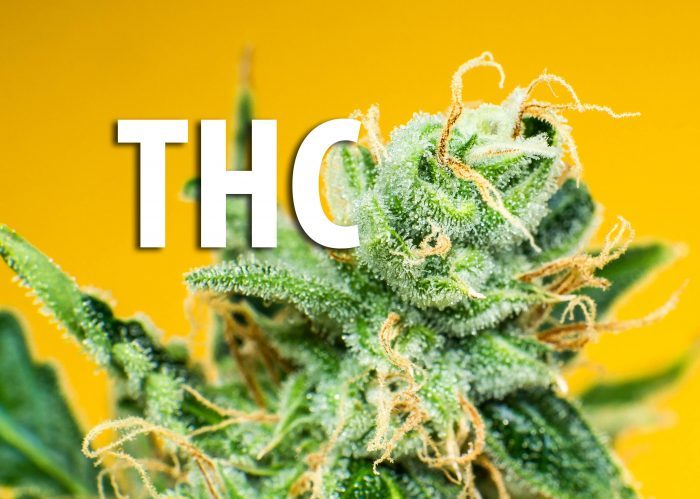Blog
What Is THC? Benefits, Risks, Side Effects
Short for tetrahydrocannabinol, THC is the component in cannabis responsible for the plant’s psychoactive effects. When you feel “high” after using cannabis, that’s because of THC.
THC is a cannabinoid, a category of chemicals that interact with the body’s endocannabinoid system. By attaching to cannabinoid receptors in the brain, THC activates neurons that influence pleasure, memory, thinking, coordination, and time perception.
Some research and anecdotal evidence indicate THC may be used to treat a range of medical conditions. And from a recreational standpoint, it can feel good, causing a sensation of euphoria and relaxation in some.
Here is what you need to know about THC, from how it differs from CBD to its therapeutic uses.
CBD vs. THC
After THC, CBD is the most prevalent cannabinoid in cannabis.
Unlike THC, CBD won’t get you high. That’s because CBD does not stimulate cannabinoid receptors in the brain like THC, says Jordan Tishler, MD, President of the Association of Cannabis Specialists. Instead, it changes how those receptors react to THC. For example, researchers have found CBD can weaken THC’s anxiety-causing effects.
Another difference between THC and CBD is legality. In the United States, cannabis is federally illegal. However, on the state level, legality varies.
As for CBD’s legality? It’s complicated.
CBD from industrial hemp (or cannabis with less than 0.3% THC) is legal, but CBD obtained from cannabis with more than 0.3% THC can only be used in states where weed is legal.
THC products
- Flower
- Concentrates (oil)
- Cannabis-infused edibles (candies, drinks, baked goods)
- Tinctures
- Topicals
Important: The drugs Marinol and Syndros contain a synthetic form of THC and are available by prescription to treat nausea and vomiting caused by chemotherapy, as well as stimulate appetite and weight loss in people with HIV/AIDs.
How long does THC stay in your body?
THC will build up in your system over time, so how frequently you use THC determines how long it remains in your body. In general, THC can be detected in infrequent users for one to three days after last use and 30 days or longer in chronic users.
Your method of consumption plays a role, too: For example, your body takes longer to process the THC in an edible, meaning it will stay in your system longer than vaping or smoking.
Here’s how long THC can be detected in your system using various testing methods:
| Infrequent Users | Frequent Users | Chronic Users | |
| Blood Test | 1 to 2 days | 7 days | 7 days |
| Urine Test | 1 to 3 days | 7 to 21 days | 30+ days |
| Saliva Test | 24 hours | 30 hours | 30 hours |
| Hair Test | 90 days | 90 days | 90 days |
Important: Contrary to popular belief, you can’t flush THC out of your system by sweating or drinking water, but experts say the only way to detox THC is by waiting it out and stopping use.
4 Benefits of THC
THC is used medicinally to relieve symptoms of certain conditions. But, because cannabis is federally illegal in the United States, research on THC is significantly limited.
“Most of the clinical data we have is anecdotal evidence or evidence from practitioners in states where they allow medical marijuana,” says Amol Soin, MD, the medical director of the Ohio Pain Clinic and member of the Ohio Medical Marijuana board. “Marijuana is a [DEA] schedule one substance, which eliminates the ability to do a lot of clinical trial work.”
Here are some of the emerging benefits, researchers have found so far:
1. Alleviates pain
Chronic pain relief is the most common reason why people seek medical cannabis. A large 2015 systematic review evaluated cannabis studies in patients with chronic pain and found THC increased the odds for pain improvement by around 40%.
While clinical trials support the use of cannabis for chronic pain, researchers agree more studies are needed to determine what doses, forms, and combinations of cannabinoids are most therapeutic for chronic pain patients.
2. Reduces nausea from chemotherapy
Two oral THC-containing drugs — nabilone and dronabinol — have been available for the treatment of chemotherapy-induced nausea and vomiting for more than 30 years.
A small 2010 study of chemo patients found those who took a THC-containing medicine in combination with standard treatment experienced stronger protection against nausea and vomiting than patients who received the standard treatment alone.
3. Reduces muscle spasms in paraplegics
Studies suggest THC products can modestly reduce muscle spasms, a common symptom experienced by people with Multiple Sclerosis (MS) and paraplegia.
In fact, a large 2015 systematic review concluded that THC used in combination with other cannabinoids improved self-reported muscle spasms more than a placebo, although the difference was not statistically significant.
4. Improves sleep
Sleep disturbances are typical in people living with health problems like MS and chronic pain. Studies in these groups show THC products can improve short-term sleep problems, reduce sleep disturbances, and decrease the time it takes to fall asleep. However, it’s unclear whether the THC directly affects sleep quality or whether sleep is improved because chronic symptoms were reduced.


Hi, this is a comment.
To get started with moderating, editing, and deleting comments, please visit the Comments screen in the dashboard.
Commenter avatars come from Gravatar.